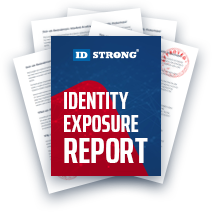Advanced Persistent Threat: The Frightening Process of APTs
Table of Contents
- By Emmett
- Published: Jun 10, 2022
- Last Updated: Nov 23, 2023

When we ask the question “What is an APT,” there is no simple or succinct answer. The world of cybersecurity is complex, with many layers interacting to create the safety nets we all enjoy online. With advanced cybersecurity comes advanced cybercriminals, and APTs are one of the many ways information can be stolen online. Learning to identify these attacks is the best way to mitigate the damage they bring and help keep vital information safe.
What is an Advanced Persistent Threat (APT)?
An advanced persistent threat, or APT, is a cybersecurity term referring to coordinated and continuous attacks on a single system or network. These cyberattacks usually involve the use of advanced hacking techniques and malicious malware and tend to focus on government organizations or large corporations. The motivation for these attackers can range from financial to political, and any data they find could be used as a bargaining chip with their target organization.
APT attacks are highly sophisticated and tend to involve the cooperation of several different hackers or cybercriminal groups. These cybercriminals will use a variety of advanced tactics to gain access to the systems they target, exploiting the zero-day vulnerabilities of networks and using techniques like social engineering and spear phishing. APT attackers will even rewrite entire sections of a system's code to hide their tracks, establishing access points for repeated intrusions into a network.
How Do APTs Work?
An APT attack usually follows a series of steps, each designed to facilitate repeated access to a supposedly secure network. Once inside, hackers use this technique to continually attack that network until they get the data they require.
-
Get in the Door
These criminals may even use a combination of multiple different methods to get in, and once there, they move to step 2.
- False Links
- Malware
- App Vulnerabilities
- Insider Information
- Phishing Programs
There are a number of ways hackers gain access to a secure network, including:
-
Establish Backdoor Access
Once hackers have their way in, they expand their areas of network operation by establishing a series of backdoors. That way, if one entry point is discovered or destroyed, they can utilize the many others at their disposal to regain access. This is often done by installing malware within the system that rewrites code and helps disguise the backdoors as organic parts of the network.
-
Dive Further Into the System
Using similar techniques to their initial access phase, hackers engaging in an APT attack will find ways into the more protected areas of a network. This includes those sections guarded by administrator restrictions. The more defenses up around a section of the system, the more likely it contains sensitive information.
-
Expand to All Corners
Once administrative rights have been granted (or, in this case, stolen) to the hackers, they’ll be able to expand into every nook and cranny of the network. Once the attack has become widespread enough, it will even begin to affect any servers connected to that central network. This could mean access to employee or client devices if they share a connection with your system.
-
Proliferate, Then Wait
After multiplying and creating an embedded web within their target, hackers will often remain within a system for long periods of time. This is to observe the inflow and outflow of information, receive advanced warning of any backdoor detections, and create more points of access for future attacks. Hackers may leave once they get the information they seek or stay to gather more data if the need arises.
Who is Targeted by APTs?

While any system can be targeted by an advanced persistent threat, the usual victims are networks within the government, large companies, or high-value individuals. Unfortunately, more small and medium-sized businesses have been experiencing these attacks, as cyber criminals know these companies have less capital to spend on advanced cybersecurity.
Hackers can even use companies you partner with, who may have subpar cybersecurity measures, to slowly access your network over time. Once inside, they can steal any data stored within your network, even the personal information of you and your employees.
What Should I Do If My Data is Stolen?
If you’ve been the victim of an APT attack, or any other type of cybercrime, your information could be leaked or sold. If sold on the black market, this data could lead to a number of financial and personal issues, including identity theft and fraud. If you think your information may have been stolen, it's always best to run an identity threat scan, which is found for free through services like IDStrong.
Even if you believe your data to be safe, keep an eye out; advanced persistent attacks and other hacking techniques are becoming more common, and cybercriminals are relentless in their pursuit of valuable data. Learning the signs to look out for can keep you safe, and if you act quickly, you may be able to avoid the damage this dangerous hacking technique can cause.



















































































































